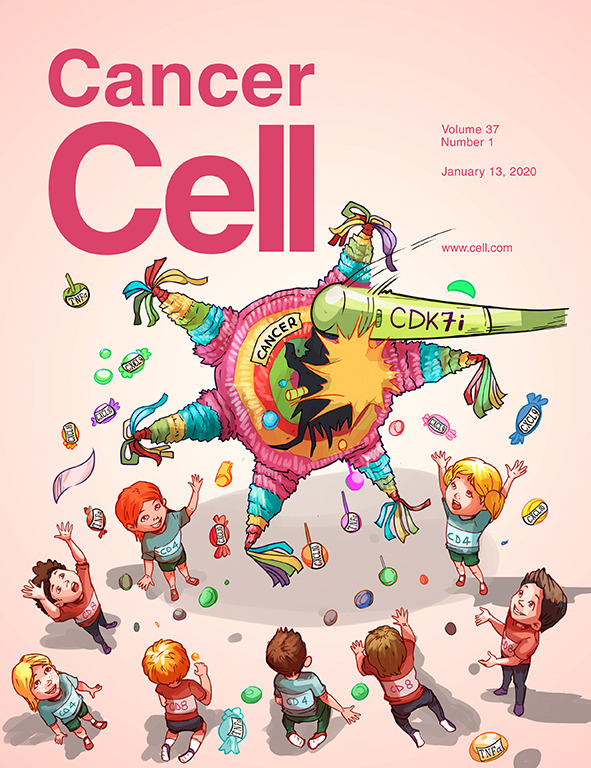绘制髓系细胞功能图:肿瘤和神经元微环境的空间多样性
IF 48.8
1区 医学
Q1 CELL BIOLOGY
引用次数: 0
摘要
在本期《癌细胞》(Cancer Cell)杂志上,Zhong 等人探讨了 TREM2 在胶质母细胞瘤相关髓系细胞中的双重作用,证明了它在肿瘤-神经界面促进炎症和在肿瘤核心内受局部微环境影响抑制炎症的功能。这些发现为神经肿瘤免疫疗法的发展开辟了广阔的前景。本文章由计算机程序翻译,如有差异,请以英文原文为准。
Mapping myeloid cell function: Spatial diversity in tumor and neuronal microenvironment
In this issue of Cancer Cell, Zhong et al. explore the dual role of TREM2 in glioblastoma-associated myeloid cells, demonstrating its function in promoting inflammation at the tumor-neural interface and suppression within the tumor core, influenced by the local microenvironment. These findings open up promising prospects for advancements in neuro-oncological immunotherapy.
求助全文
通过发布文献求助,成功后即可免费获取论文全文。
去求助
来源期刊

Cancer Cell
医学-肿瘤学
CiteScore
55.20
自引率
1.20%
发文量
179
审稿时长
4-8 weeks
期刊介绍:
Cancer Cell is a journal that focuses on promoting major advances in cancer research and oncology. The primary criteria for considering manuscripts are as follows:
Major advances: Manuscripts should provide significant advancements in answering important questions related to naturally occurring cancers.
Translational research: The journal welcomes translational research, which involves the application of basic scientific findings to human health and clinical practice.
Clinical investigations: Cancer Cell is interested in publishing clinical investigations that contribute to establishing new paradigms in the treatment, diagnosis, or prevention of cancers.
Insights into cancer biology: The journal values clinical investigations that provide important insights into cancer biology beyond what has been revealed by preclinical studies.
Mechanism-based proof-of-principle studies: Cancer Cell encourages the publication of mechanism-based proof-of-principle clinical studies, which demonstrate the feasibility of a specific therapeutic approach or diagnostic test.
 求助内容:
求助内容: 应助结果提醒方式:
应助结果提醒方式:


